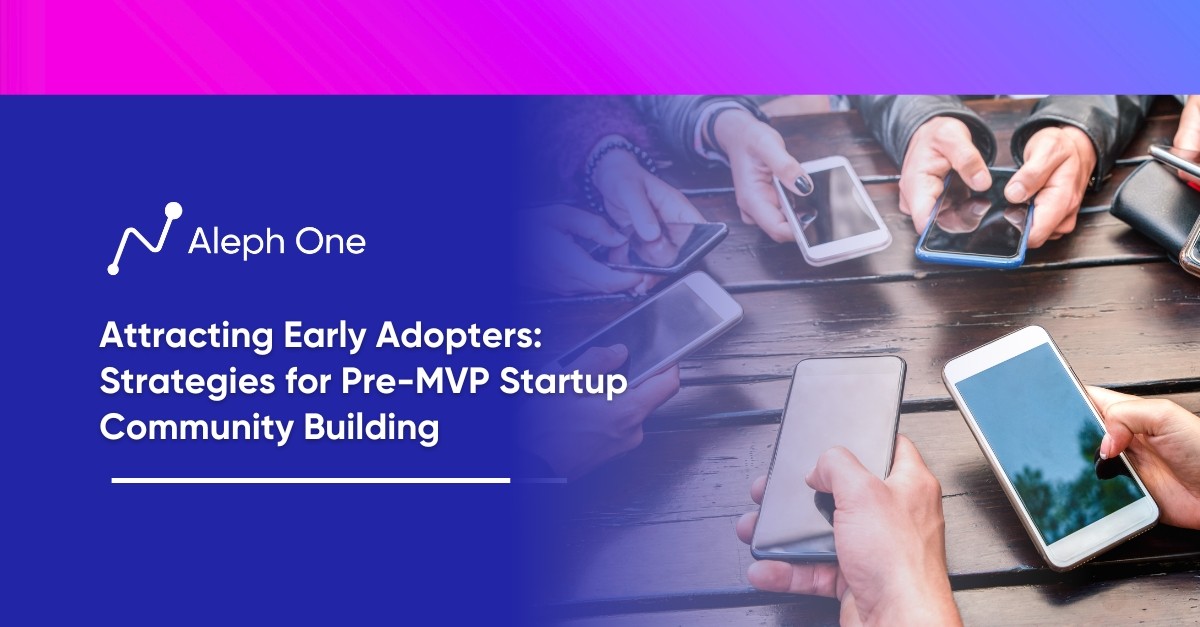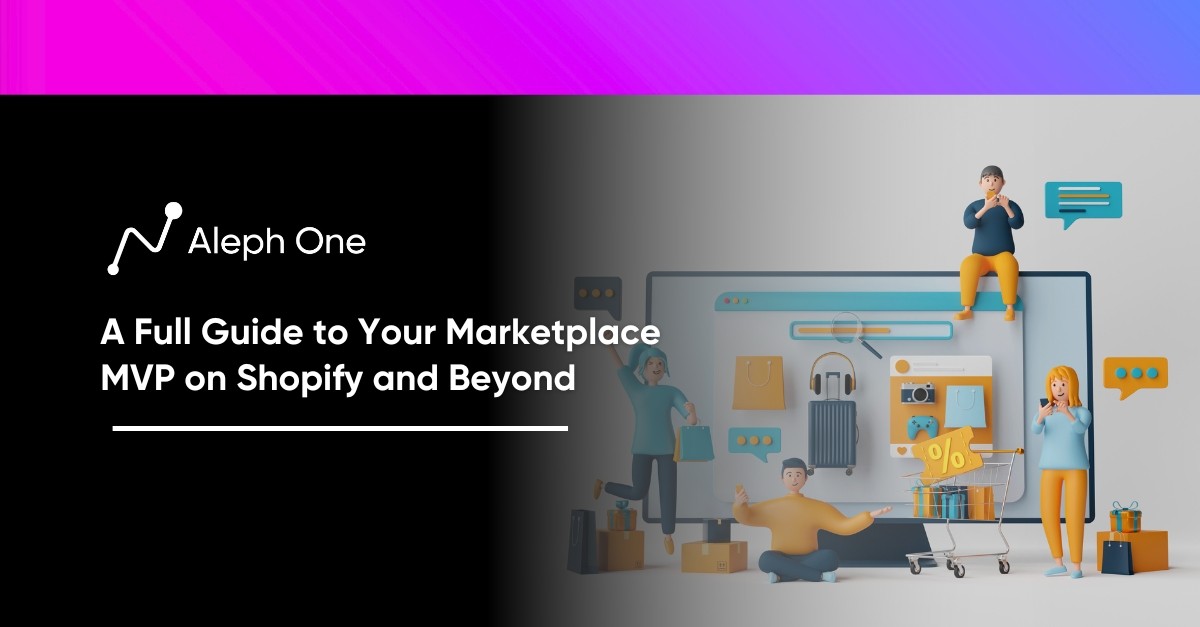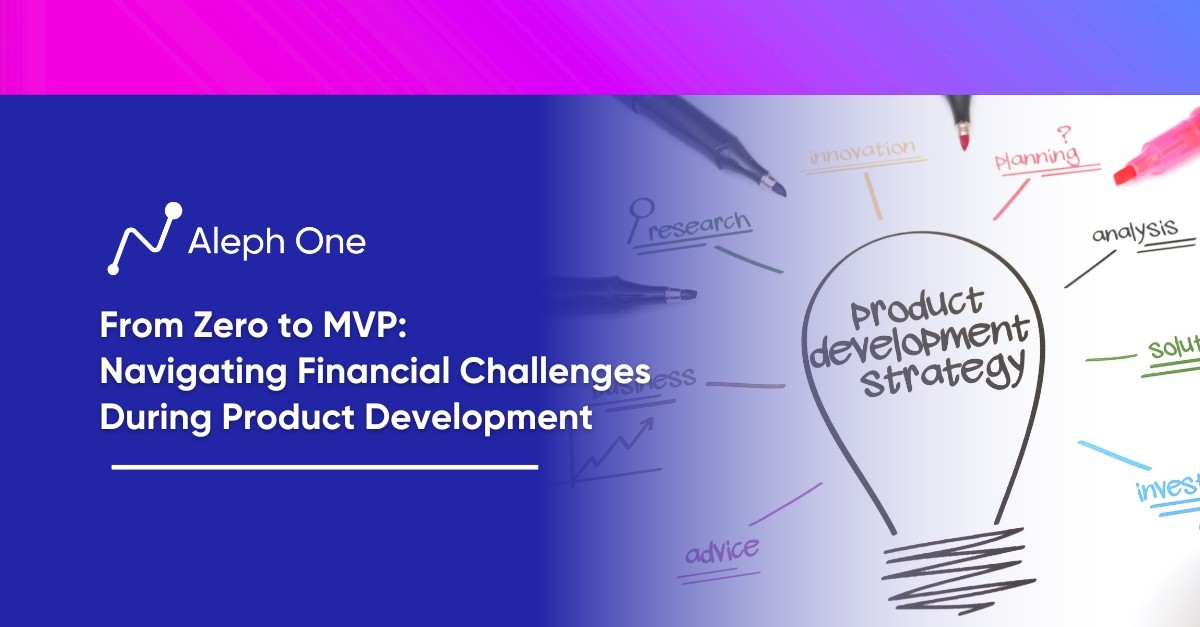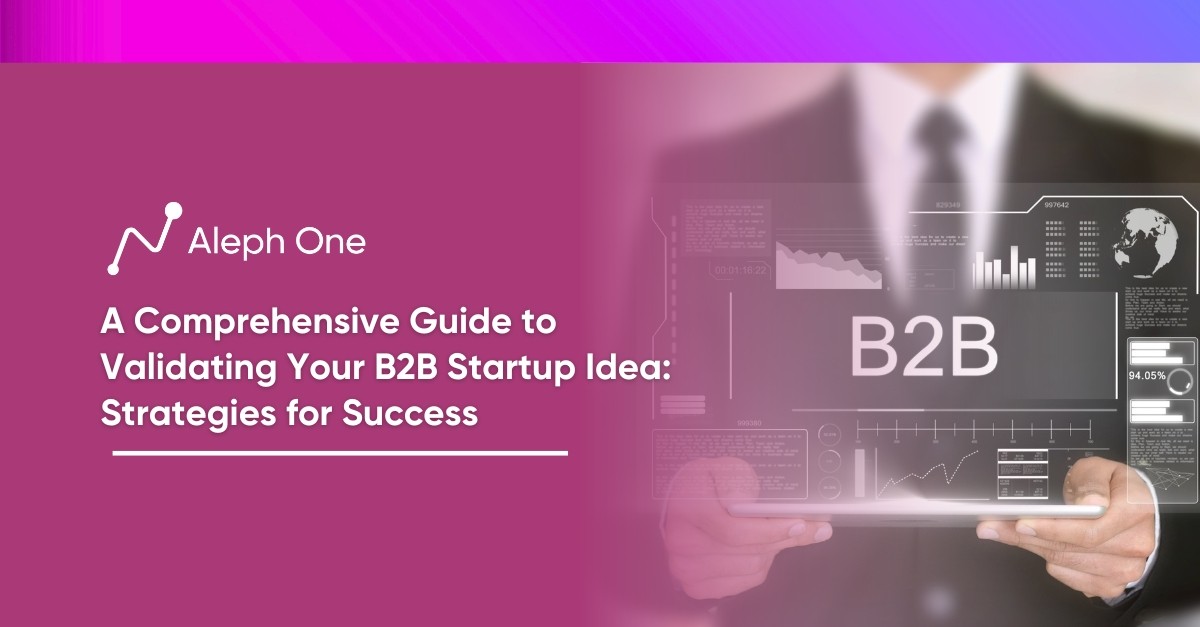Let’s work together to build something amazing. Share your project details and our team will reply to figure out the next steps to your success.

Attracting early adopters is a critical milestone for startups, and implementing effective strategies can set the stage for long-term success. By leveraging the power of FOMO, tapping into influencers, building pre-launch communities, sharing valuable content, attending industry events, and tracking metrics, startups can engage early adopters and turn them into loyal brand advocates. However, it’s essential to balance exclusivity and accessibility, avoiding excessive restrictions that could hinder growth. Nurturing early adopters requires ongoing communication, transparency, and a commitment to delivering value. With a dedicated focus on nurturing and optimizing early adopter initiatives, startups can pave the way for sustainable growth and build a strong foundation for future success.

The Power of FOMO: Exclusivity and Scarcity
Creating a sense of scarcity and exclusivity is a powerful way to attract early adopters by tapping into the psychological principle of FOMO (fear of missing out). People perceive increased value and desirability when access seems limited or available only to select individuals. They want to be one of the few who gain entry.
Raya – Exclusive Membership-Based Network
Similarly, the dating app Raya markets itself as a “private, membership-based network” and admits only a tiny fraction of applicants, creating an air of exclusivity that attracts influencers and celebrities. Their selective admissions process is critical to Raya’s brand and appeal. Limiting access amplifies people’s perception of the value and status of being on the platform.
Limited Offers and Scarcity
Scarcity can also be created through limited-time offers and opportunities. For example, many startups offer exclusive pre-launch perks or discounts to early subscribers and beta testers. The notion that these offers will disappear soon spurs people to take action to avoid missing out. The fear of the opportunity expiring taps into our psychological tendency to value scarce and fleeting rewards.
While artificially limiting access may seem counterintuitive, it taps into a powerful human motivator. When people perceive an opportunity as scarce or exclusive, they desire it more and spread the word. For pre-launch startups, creating scarcity and exclusivity around your product or offers is an effective way to attract influencers, build hype, and gain access to early adopters. But be careful not to take it too far, as overly restricting access can backfire and prevent growth. The key is strategically limiting access to amplify desirability while allowing new members to join the community.
Identify Your Champions: Find the Influencers Who Will Champion Your Brand
Early adopters are crucial for startups, but some are more influential than others. Identifying key influencers in your industry and community and turning them into brand champions can be a game changer for gaining traction. Influencers already have an established audience and credibility, so their recommendation or partnership lends authority to your brand.
Research Product or Mission
Do your research to find influencers genuinely interested in your product or mission. Look for influencers with an engaged following of potential customers, an active social media presence, and a history of supporting or promoting new brands. Watch their content and see if your product or service could benefit their audience.
Identify Key Targets & Customize Content
Once you identify key targets, contact them personally through email or social media. Explain why you think there is an opportunity for partnership and how it could benefit their followers. Be authentic in your outreach—influencers can spot disingenuous flattery from a mile away. Focus on how you can add value to them and their community. For example, you might offer their audience a special discount or exclusive access to your product.
Build Relationships With Influencers
If an influencer shows interest, work to build a genuine relationship with them. Continue the conversation, answer their questions, and make them feel invested in your journey. Invite them to try your product or service when the time is right. Influencers will only champion your brand if they connect with your product.
Partnerships with influencers often start small, then grow over time as they become more enthusiastic champions. They may first mention your brand on social media, do an entire blog post or video review, and eventually become an advisor or ambassadors. Nurturing these relationships requires ongoing communication, transparency, and reciprocity. Always expressing influencer partnerships, startups can gain access to new audiences, build credibility, and accelerate growth. Social media platforms like Instagram and YouTube have enabled the rise of influencer marketing, and partnering with key influencers in your industry is now a viable strategy for many new brands.
Build Your Pre-Launch Community: Engage Your Early Fans
One of the most effective ways for startups to attract early adopters is to build an engaged community of fans before launch. By gathering a group of enthusiastic supporters early on, you can gain valuable feedback, build hype, and reward your champions with exclusive access.
Build Social Media Profiles for Your Startup
Start building your pre-launch community by creating social media profiles for your startup and sharing updates on your product development journey. Post behind-the-scenes photos and videos, share milestones, and engage with followers by replying to their comments and messages. You can also start an email newsletter to provide more in-depth updates and allow subscribers to sign up for a beta test or early access program.
Create a Landing Page for the Pre-launch Community
Creating a landing page for your pre-launch community is a great way to start gathering emails and promoting your startup. Offer an incentive like early access, a discount, or exclusive content in exchange for people signing up on your landing page. Share your landing page on social media, and with any influencers you have relationships with to drive more traffic.
Host Live Events
Even before you have a product to demo, hosting live events can effectively build personal connections with early adopters. Organize a meetup to discuss the problem you’re solving, share your vision, and get feedback from attendees. Look for opportunities to speak at industry conferences or relevant meetup groups. Events establish your credibility, spread awareness about your startup, and allow people to engage with your brand in person.
Reward Early Fans with Loyalty and Support
Once you have a group of engaged early fans, reward them for their loyalty and support. Provide exclusive access to your beta test, offer discounts and perks, and make them feel like VIP members of your community. Their feedback and word-of-mouth marketing will be invaluable as you build your startup.
Continuously improving your pre-launch community strategies based on data and feedback is critical. Track how people engage with your social media, landing page, and events to determine what’s working and what can be optimized. Build on your momentum to keep attracting early adopters and turn them into lifelong champions of your brand.
Content is King: Share Valuable Insights With Your Early Adopters
To attract and engage early adopters, startups must establish themselves as industry thought leaders. Content creation is one of the most effective ways to build trust and credibility. You can position your startup as an authority by sharing valuable insights, expertise, and advice with your target audience.
A blog is one of the best ways to create content for early-stage startups. Writing posts about trends in your industry, lessons you’ve learned building your product, behind-the-scenes details of your startup journey, and tips for your target customers are all great options. For example, fintech startup NerdWallet gained initial traction by publishing in-depth guides and comparisons on banking, investing, loans, and more. Their educational content established them as a trusted source of financial advice for millennials.
Video Content
Video content is also popular with early adopters. Creating video tutorials, product demos, founder interviews, or live streams allows people to engage with your brand authentically. For example, Gusto, an HR and payroll platform, launched a video series called “The Startup Journey,” which provided a behind-the-scenes look at running a startup. Their videos were a hit, gaining thousands of views and shares.
Email Newsletters
Email newsletters are another channel to share content with your early fans. Send newsletters consistently to provide value to your subscribers with blog post roundups, trend reports, product updates, or company news. For example, theSkimm, a media company, gained over 4 million newsletter subscribers by delivering a daily roundup of news stories in an engaging, conversational tone. Their newsletter helped establish a personal connection with readers and build a loyal fanbase.
While content creation requires time and resources, it has significant payoffs for startups. Valuable content can boost your SEO, increase website traffic, build trust, and engage your target audience. By sharing insights and expertise, you can position your startup as a thought leader and gain the attention and loyalty of early adopters.
Get In Front of Your Audience: Attend Industry Events
Industry events like conferences, meetups, and networking gatherings are prime opportunities for connecting with early adopters. Attending events relevant to your startup’s industry and community can help you gain exposure, build relationships, and spread the word about your product or service.
Speak at Industry Events & Share Your Product
Speaking at industry events is one of the most effective ways to establish your startup as a thought leader, share your insights with early adopters, and drive interest in your product. Submitting proposals to speak on panels or presentations on topics you’re uniquely qualified to address is a proven startup strategy. Even if you’re not selected to speak at first, it positions you as an expert in your field and someone to consider for future events.
Sponsor Industry Events
Sponsoring industry events, even at a small level, increases your visibility and gives you a platform to promote your startup to attendees. You’ll gain exposure through branding on the event website, signage, promotional emails, and more. Sponsoring also often includes perks such as complimentary attendee passes, booth space, and the opportunity to include promotional materials in attendee gift bags.
Benefits of Attending Industry Events
Attending industry events as an attendee or exhibitor allows you to network, spread brand awareness, and connect directly with potential early adopters. Make the most of your time at events by scheduling meetings with key influencers, collecting attendee contact information, promoting your product, and starting conversations with people who express interest.
Host Your Own Event Showcasing Your Startup
Hosting your local event is a bold move that can pay off significantly in gaining early adopters. Organizing a meetup, networking happy hour, panel discussion, or conference allows you to establish your startup as a leader in the community and build personal relationships with attendees. While hosting an event requires a significant time and financial investment, it gives you complete control over the messaging and the ability to collect contact information from everyone in attendance.
Startups should prioritize industry events in their strategies for attracting early adopters. Speaking, sponsoring, attending, and hosting events are all effective ways to gain exposure, spread brand awareness, build relationships, and connect with potential customers. With the right approach, events can become a driving force for gaining traction and securing early adopters.
Measure, Optimize, Repeat: Track Your Early Adopter Success
To attract and engage early adopters, you need to implement metrics to track the success of your strategies. Some of the key metrics to monitor include:
Website Traffic
Track how many people visit your website and landing pages. Look for trends of increasing traffic over time and spikes from your influencer partnerships, content marketing, and event attendance. Traffic indicates that you’re attracting attention and interest from potential early adopters.
Social Media Engagement
Follow the number of likes, shares, comments, and followers on your social media channels. Strong attention shows that your content and messaging resonate with your target audience. Look for opportunities to engage with your followers by replying to their comments and sharing their social media mentions of your brand.
Email Signups
The number of people signing up for your email newsletter is among the best indicators of interest from potential early adopters. Ensure you incentivize people to sign up for your newsletter by offering valuable content and exclusive access. Engage your email subscribers with a welcome message and call them to action to spread the word about your startup.
Qualitative Feedback
Talk to your early fans and community members about your startup. Ask them what they like about your product or service, how you can improve, and what else would be valuable to them. Look for common themes in the feedback that can help shape the development of your offering.
Referrals
Track how many of your early adopters are making referrals to friends and colleagues. Referrals indicate that early fans are highly engaged and willing to champion your brand. Offer referral incentives such as discounts, access to new features, or free trials.
Analyze Metrics and Optimize Your Strategy
Once you’ve implemented metrics, analyze what’s working and not working to optimize your strategies. Double down on the successful tactics like valuable content or influencer partnerships that drive the most traffic and signups. Look for ways to improve underperforming strategies by evolving your messaging or targeting new audiences.
Measure, Optimize & Repeat to Build Startup Growth
Tracking and optimizing your metrics will allow you to scale your early adopter initiatives. While attracting early adopters is critical for startups, real success comes from turning those early fans into lifelong customers and brand advocates. Measure, optimize, and repeat to build sustainable growth.
How can a startup strike the right balance between exclusivity and accessibility to prevent growth hurdles?
Striking the right balance between exclusivity and accessibility can be achieved by limiting access to a degree that amplifies desirability without overly restricting it. Startups should create a sense of scarcity and exclusivity around their product or offers to attract influencers and hype but should gradually allow more users to join the community. Monitoring user feedback and engagement can help decide when to relax access limitations.
What are some ways to make initial contact with influencers that feel authentic and resonate with them?
When making initial contact with influencers, authenticity is crucial. Start by thoroughly researching the influencers and understanding their interests, style, and audience. Contact them personally through email or social media and highlight how your product or service could be valuable to their followers. Be genuine in explaining the potential benefits of a partnership, and focus on adding value to their audience through exclusive offers or content.
What types of content have shown to be most effective in gaining the attention of early adopters in various industries?
The most effective content for gaining early adopters’ attention varies across industries. Still, it often includes educational and insightful content, behind-the-scenes details of the startup journey, tips for target customers, and industry trends. Blog posts, video tutorials, interviews, and email newsletters can engage early adopters successfully as long as the content is tailored to the target audience and their preferences.
Get the latest news and updates from Aleph One in your inbox.



